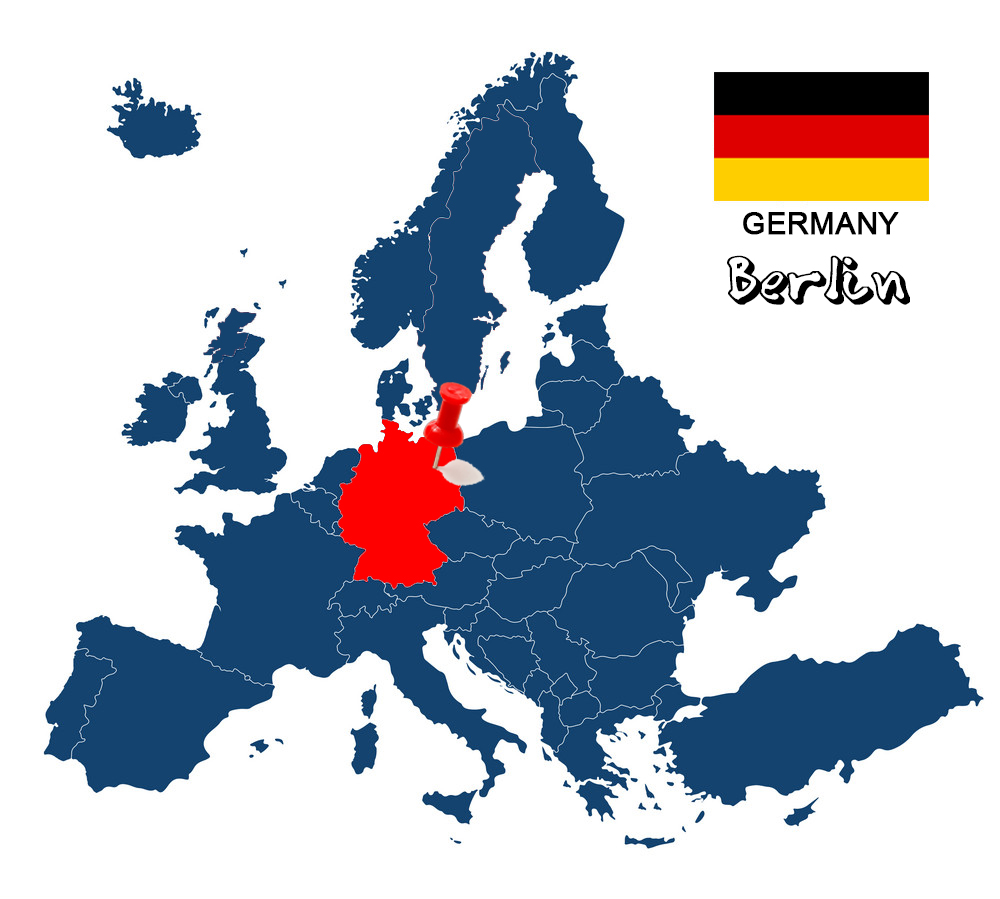
A little bit of its aggravated past, a little bit that I was negatively challenged and a little bit that I had other countries as a priority, contributed to the fact that I had never visited Germany. When a friend of mine, who lives permanently in Berlin, began to describe to me the life there and essentially to deconstruct the negative image I had in my mind, the first spark was lit. I searched for information, convinced my best friend, booked tickets and our trip to one of the most" troubled” cities in the world would soon be a fact.
A few words about the city
Berlin is the capital and the largest city in area and population of Germany and is the second largest city in the European Union. In its history, Berlin was the capital of several states, including the Brandenburg Marchioness, the Kingdom of Prussia, the German Empire, the German Empire and the German Democratic Republic. On October 3, 1990, with the reunification of the two German states, it became the capital of the unified Federal Republic of Germany and thus replaced the then capital, Bonn. The periods of prosperity and decline have made Berlin a metropolis of great changes and contrasts. Most of the city was destroyed after World War II, but several monuments have been saved and repaired. After the fall of the wall, historic areas such as Potsdamer Platz were completely renovated thus giving us the opportunity to get to know the city as it was before the bombing. Due to the alternative style of Berlin, you will not be indifferent. So either you will love it and want to go back at the first opportunity, or you will hate it and never visit it again. So I will try to introduce you to Berlin through my own eyes and share with you what I think a person who visits it for the first time should see.
Alexanderplatz
When we talk about a center in Berlin, we mean Alexanderplatz or as the locals call it "Alex". As a square, it may be one of the exploited in the city, but it has a long history and from there basically everything starts. Most of the buildings in the square were destroyed by Allied bombing at the end of World War II. But after the war, the square became the center of East Berlin, and the Soviets demonstrated the Soviet style of architecture, building large buildings and a towering tower for television (Fernsehturm). The TV tower is one of the largest structures in Europe, with its antenna reaching 365m., while at 207m. there is a Globe that hosts a revolving restaurant, which on days without clouds and fog, you will have the opportunity to admire the whole town from above. In addition, in the square is the world time clock (Weltzeituhr), which shows locals and tourists the time in various cities and countries around the world.
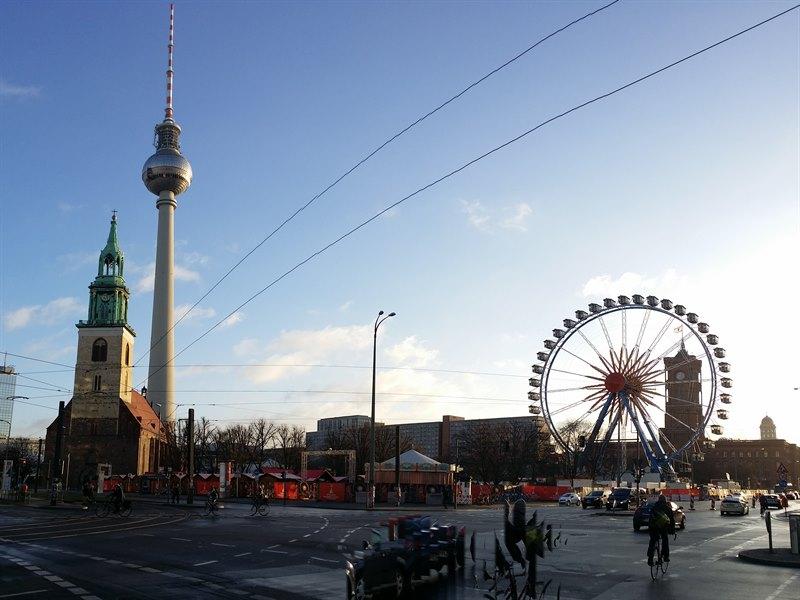
Museumsinsel
The Museum Island of Berlin (Museumsinsel), which has been declared by UNESCO as a World Cultural Heritage Site, is a piece of land between the Spree and Kupfergraben rivers and also the home to 5 of the city's top museums. With a single ticket that costs 18e, you will be able to visit all five museums, which are of particular interest and you can get a taste for each of them below:
The Pergamon Museum (Pergamonmuseum) is the most famous and in my opinion the most interesting of the five. There are exhibited large collections of sculptures and coins, but the wing that steals the show is the one in which is essentially an entire temple from Babylon! The impressive Ishtar Gate will make you stare at it for a while and wonder how they managed to lift it and carry it all the way to Berlin.
The Old Museum (Altes Museum) is the first one you will meet when you arrive on the Island of Museums and undoubtedly the most impressive from the outside. It permanently houses collections from the ancient Greek and Roman era on the first floor, and some special periodical collections on the second. The most interesting room is the one with the large statues of the gods of Olympus, which are placed in a circular arrangement, simulating an ancient Greek temple.
The New Museum (Neues Museum) is another of the buildings that were destroyed, almost completely, during World War II and reopened only in 2009. This museum is dominated by the Egyptian element, with the most impressive exhibit the bust of Nefertiti, which is forbidden to photograph at close range.
The Old National Gallery (Altes Nationalgalerie) has an external view of a Roman temple, and its architecture will excite you even more than the exhibits themselves. It has one of the largest collections of 19th century sculptures and paintings of famous artists, such as Van Gogh, Manet, Delacroix and others.
If I had to rank the five museums in a row, the Bode Museum, it would probably be the one with the least interest. It presents collections of sculpture, late antiquity and Byzantine art. I would suggest visiting it only if you have procured the single ticket, which includes all museums and not individually.
Berliner Dom
The Berlin Cathedral (Berliner Dom) was built between 1894 and 1905 and is located on Museum Island on the banks of the river Spree, which implies an incredible view both from below and from its top. During World War II, the building was hit by a bomb, as a result of which the Government of East Germany made the decision to demolish the temple. Fortunately, for us, in 1975, they changed their mind and so began its reconstruction, until 1993 it opened its gates again. The entrance costs 7e and I think it's worth the money. Apart from the impressive sanctuary in Baroque style, located on the first floor, the visitor has the opportunity to admire a space with exhibits of temples from all over the world in miniature (yes, there is also the Parthenon), a space with tombs of great people of the city and of course to climb to the top and see the beauty of Berlin from above.
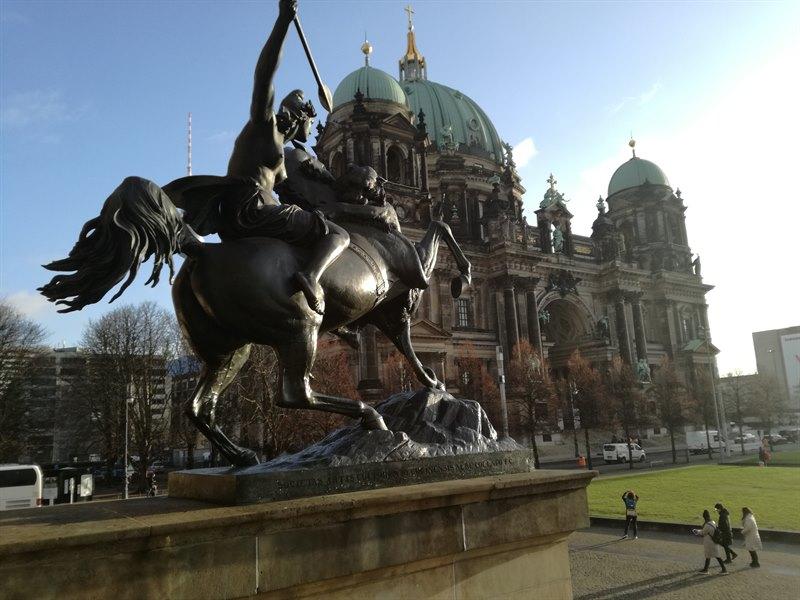
East Side Gallery-Gedenkstatte Berliner Mauer
The East Side Gallery is a 1.3 km piece of the Berlin Wall along Muhlenstrasse in the area of the former East Berlin. It is the largest and longest-running exhibition in an open space in the world, with 105 murals in total, which basically have as main feature the manifestation of joy and the feeling of liberation after the fall of the wall. Murals as a means of expressing and attracting tourists were widespread, but with scattered murals and only on the west side of the wall. The creations of artists in the east after the fall turned the cement into a continuing declaration of freedom and reconciliation. One of the most famous creations is the “Mortal Kiss” depicting Erich Honecker, Secretary General of the Communist Party of East Germany giving a kiss on the mouth with Leonid Brezhnev, Secretary General of the Communist Party of the Soviet Union.You will understand that you are approaching this by the many people around who are waiting to be photographed in front of it.
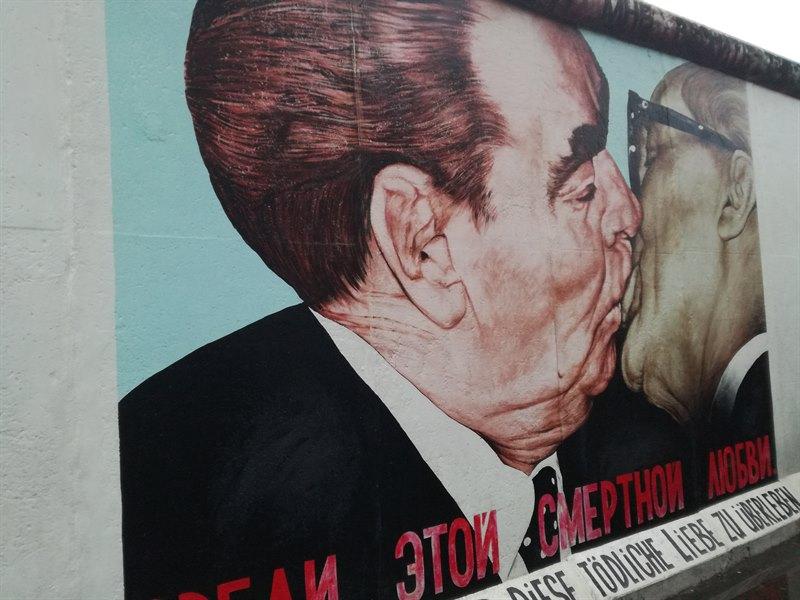
In another quarter of the city, there is the Berlin Wall monument (Gedenkstatte Berliner Mauer). This particular piece is not something special, as only a small part is left unchanged, while the rest looks like iron bars. This point, however, is the living history of the city, an emotionally charged place that you should not miss. Touch the wall and walk along it reading the signs, telling stories about who has died there. Right next door is the Mauer Museum of Berlin, which has free entrance and has exhibits and manuscripts from the construction to the demolition.
Brandenburger Tor
If one had to choose the symbol of Berlin, I think it would end up at the Brandenburg Gate (Brandenburger Tor). It is a monumental gate of the 18th century with exceptional historical and architectural interest, decorated with representations from Greek mythology, while at its top there is a bronze chariot, which is driven by the goddess of peace. After the fall of the wall, the Brandenburg Gate has become a symbol of united Germany and of course peace, and is also a gathering place for celebrations. Whenever you are in the city at some celebration or holiday, be sure to visit the Brandenburg Gate, which will be full of cheerfulness and vivacity.
Reichstag
The Reichstag houses under its glass dome the German Parliament, a symbol building for the country, which passed through many waves until its final form. After the establishment of the German Empire in 1872, the need for a Parliament in Berlin arose, and so between 1884 and 1894, the Reichstag was built, mainly from war reparations paid by France, by the German architect Paul Wallat. Fires, devastation inside, removal of the dome and transfer of the German parliament to Bonn are few of those that outline its historical background. Today it is one of the main attractions of the city, in order to visit it you need to make an online application on the official website of the Bundestag, choosing two possible days and hours and in just a few minutes you will have in your email the answer for when they will accept you. After passing a rudimentary inspection and receiving the free audio tour, you will have the opportunity to climb with an elevator to the glass dome and admire the wonderful view from above and the small museum that has been set up inside it.
Holocaust Mahnmal
A few meters from the German Parliament, your gaze will fall on the Holocaust Memorial (Holocaust Mahnmal), dedicated to all the Jews of Europe, who died by Hitler's forces. These are 2711 stone plinths of varying height, without inscriptions such as names and dates, reminiscent of a labyrinth. In their ensemble they create a pattern like a ripple, which reminds another dark page of recent history. Spontaneously you will want to climb or play hide and seek among the corridors of the monument, but you should do all this carefully, as there are many security guards.
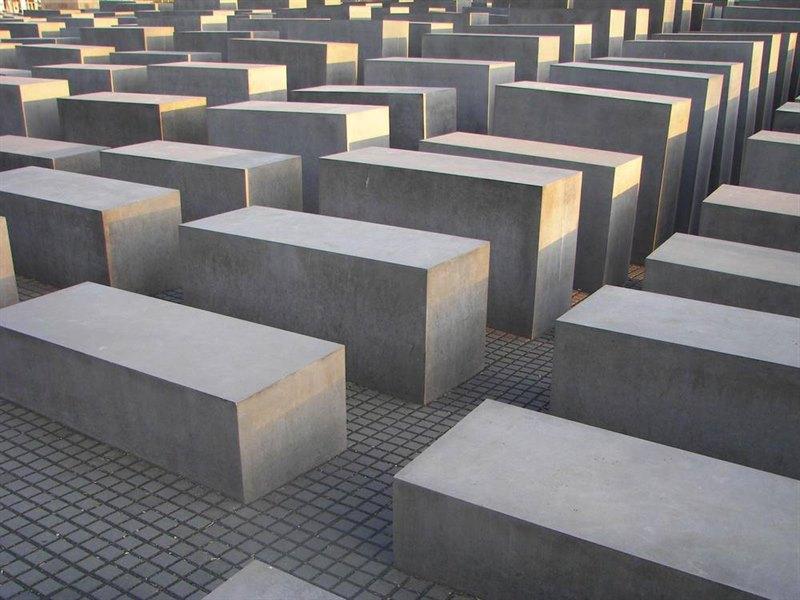
Schloss Charlottenburg
The baroque Palace of Charlottenburg (Schloss Charlottenburg) is the largest palace in the city and is located well outside the limits of the center, in West Berlin, but it is easily accessible by both subway and bus. The building is huge externally and emits at first glance a sense of wealth. It was the summer residence of Sophia Charlotte, wife of Frederick III and for the most part, the hundreds of rooms that make up it are decorated with gifts received by the royal family. And this building during World War II was destroyed after a fire, but was completely reconstructed after the Allied bombing. Admission to visit the two wings of the palace and the royal gardens, costs 13e, and a free audio tour is provided.

Tiergarten-Siegessaule
Tiergarten is another hidden oasis in the centre of Berlin; since it is a huge park that you should definitely visit, whether on foot or by bike. As you cross it, you will see the beauty of nature, with trees spreading across the length and breadth of the park and beautiful lakes breaking the green monotony.
Your visit to Tiergarten can be combined with the impressive victory column of Berlin (Siegessaule), which is one of the symbols of the city. The golden statue of victory at the top is what steals the attention, but its interior does not go unnoticed. Climbing the hundreds of steps to the top, you will have panoramic view of Berlin from above. Also, you will be able to "gaze" various attractions around the world related to victory or freedom, in miniature. Admission costs only 3e, and can be reduced for students and students.
Checkpoint Charlie
Checkpoint Charlie is one of the leading symbols of the Cold War and the epitome of the separation of West and East. It developed a reputation as the point of entry and exit from the east to the west side of Berlin and thus became a reference point in many films and novels. After the building of the wall, US President Kennedy ordered US forces to build 3 check points in different parts of the city, so that diplomats and allies can enter West Berlin. All three took their name from the American alphabet, with the first two points being called alpha and bravo. Today it remains in exactly the same place, but it has a purely tourist character. There you will find an "outpost” of American soldiers, for the right price you can take pictures with them or get a commemorative passport of East Berlin.
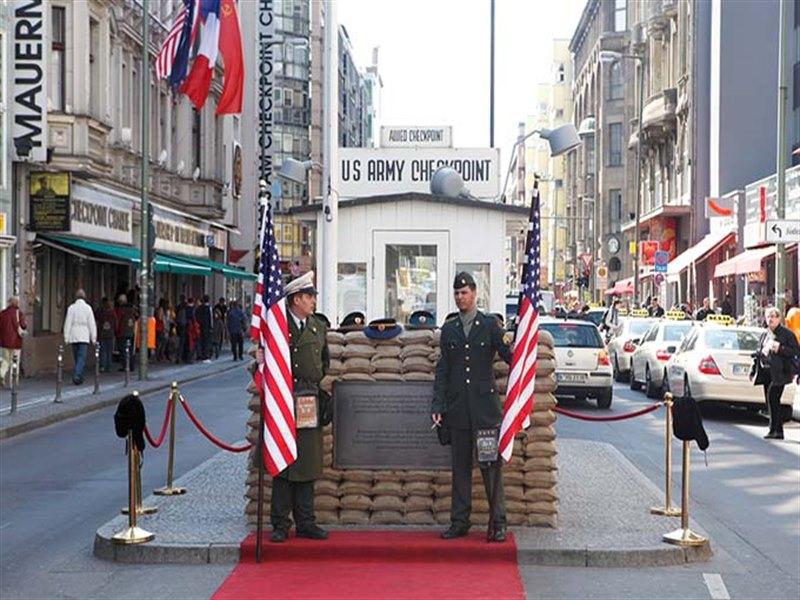
Kaiser Wilhelm Gedachtnis Kirche
The Bombed-Out Church, as the Germans call it, is a symbol of Berlin's determination to rebuild the city after the war and a constant reminder of the devastation of war. The church was built between 1891 and 1895 in honor of Kaiser William I and the truth is that it is unusually decorated for a Protestant church. On the night of November 18, 1943, the temple burned down after being hit by an allied bomb, but locals defended the ruins from demolition in 1950 and in 1961 a new, octagonal church was built right across the street. Certainly externally it has neither the size nor the prestige of the original, but its interior is equally impressive, since it is embellished entirely with blue glass bricks, and in the middle a huge golden statue of Christ with open arms. Admission to both churches is free.
Potsdamer Platz
Potsdamer Square (Potsdamer Platz) was one of the most vibrant and populous squares in Europe, but this changed after a heavy bombing in 1943. After the war, the square was located between the American, British and Russian parts of the city and thus became a dead zone. With the construction of the Berlin Wall, all the surrounding buildings were leveled, and the square tended to become a thing of the past. After the fall of the wall, however, it was decided to rebuild not only the square, but also the entire area, with skyscrapers, shops and entertainment centers trying to give the lost glamour to Potsdamer Platz.
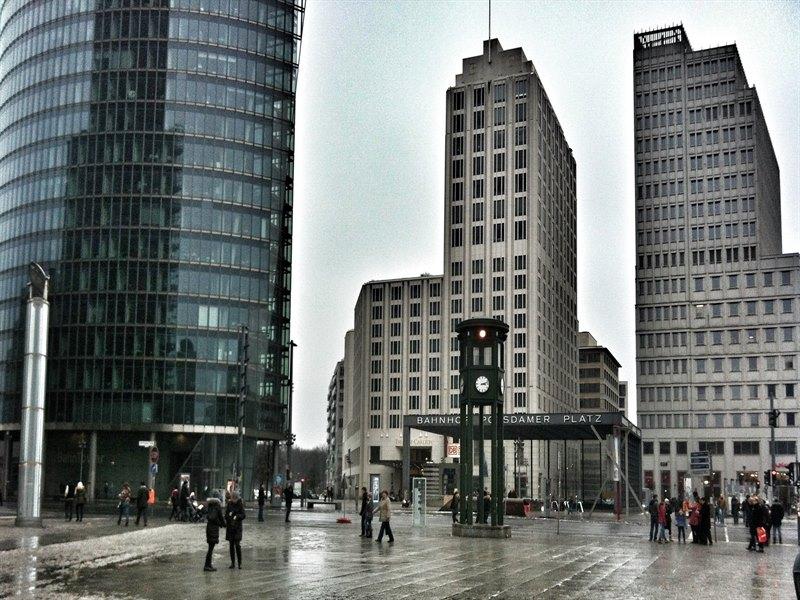
Christmas markets
If you visit Berlin during the Christmas period, you will witness the most traditional custom of Germany and this is none other than Christmas markets. Dozens of "pavilions" gathered in one space, selling from clothes, jewelry and other toiletries, to the famous German sausages and the unique Gluwein (mulled wine with cinnamon, honey, fruit and other spices). It will not be difficult to find a marketplace, since there are almost in every square or large building (Alexanderplatz, Potzdamer Platz, Kaiser Wilhelm Memorial Church, Charlottenburg Palace), but two I liked the most.
First and foremost is the Gendarmenmarkt, which may not be the largest, but it is certainly the most beautiful and famous market in Berlin. The homonymous square, which hosts this market, has two churches and a music hall, which are illuminated and decorated for the occasion. Every night there is live music or performances on stage in the center of the market. I would like to point out that this is the only market that you will need to pay entrance fee (1e) and have a rudimentary check on your bags.
The pleasant surprise, however, was the Kulturbrauerei, which is the largest in size and in my opinion also in variety. Think of something like Greek festivals, with trampolines, amusement parks, street artists and hundreds of Germans drinking in cold, mulled wine and beer.
How to go
In Berlin there are two airports: Schoenefeld, which hosts mainly the so-called low cost companies, and Tegel, which is the largest in the city and one of the largest in Germany. The most economical option to travel to Berlin is that of Ryanair (Schoenefeld airport), which with proper planning one can find tickets starting from 32€ (!) round trip. Another low cost option is that of Easyjet (Schoenefeld airport), which with proper planning one can find tickets starting from 52€ round trip. Finally, you can choose Aegean (Tegel Airport) with a stopover from Athens, for a more comfortable flight, from 151€ round trip.
Where to stay
Berlin is a huge city spread over many kilometers and so whoever visits it has many options to stay. To be honest, in contrast to cheap airline tickets, the prices in hotels and accommodation are very expensive, so if you are looking for something cheap and at the same time central, I would recommend the Easyhotel Berlin Hackenscher Markt. A "hotel" of the homonymous name airline, that offers perhaps less than expected, but at a very good price, compared to anything else in the area, and in a very good location, just two metro stops from Alexanderplatz. If you have a morning flight from Schoenefeld Airport, a good solution is the MEININGER Hotel Berlin Airport, which is very close to the airport and is a suitable for this occasion.
How to move
As soon as you set foot in Berlin, it would be good to get the "WelcomeKard", which gives you access to all means of transport and a significant discount at museums. The means of transport that you will use the most, almost exclusively, will be the metro and the train, which, although a bit old, are very reliable and will definitely take you where you want. But be careful with the tickets, as there are very frequent checks and the Germans do not play with them. Another great solution for getting around Berlin is the tram, which runs very often and moves all over the city. I think buses are the means of transport that you will use from little to nothing, the same goes for the locals, but they are also fast and easy to use. TAXIS are expensive and I think that with so many options, it is not worth using them, unless of course, you are in a hurry. Finally, an innovative mobility idea is Cartogo. An application that allows you to rent a car, which is close to you in a minute and when you finish to leave it in the space you want without further obligations.
What to eat
You are in Germany so you should definitely try the traditional wurst. What is this wurst you will be wondering? Of course, are the sausages, which in Germany with the accompaniment of curry, creating a unique version, the curry wurst. After much research I concluded that you will find the best and most economical in Curry61.
You should also try schnitzel and donner, since there are many Muslim specialists in the city. For the first, I suggest Scheers Schnitzel, located near the East Side Gallery and offers a variety of delicious schnitzel. As for Donner, the answer is one, Mustafa's Gemuese Kebab. It is a canteen (!), which no matter what time you go; there are always hundreds of people waiting to taste its delicacies. Take a walk and you'll remember me.
But what I have not forgotten is the Burgermeister. This is an "old-fashioned" burger shop, which strongly resembles America in the 80s. What I tasted in this particular restaurant is for me a reason to visit the city again!
Finally, beer, beer and again beer. Many times it is cheaper than water and you should definitely consume a lot, since you are in its birthplace. If you want to combine it with the panoramic view of Berlin, then try the Monkey Bar.
Useful information

In Berlin we travel with a passport or a new type of Police ID, where the details are indicated in Latin characters.
In Berlin the language used is, of course, German. But most, if not all, speak English, so ask for clarification in English.
The country's currency is the Euro.
Berlin is one hour behind Greece (GMT +2).
Getting to and from the airports is simple, since there are continuous bus routes, but also trains, which take you to the city center.
The Greek Embassy in Berlin is located on Mohrenstra Street 17 and its phone is + 49 30 2137033.
The weather in Berlin is usually hazy with the sun rarely appearing, while in winter the temperatures are quite low with snow being a very common phenomenon. But winter is an ideal time to visit the city, to see it decorated and snowy, while also in spring to see it full of greenery and liveliness.
Recommended excursions → Potsdam, Dresden, Leipzig
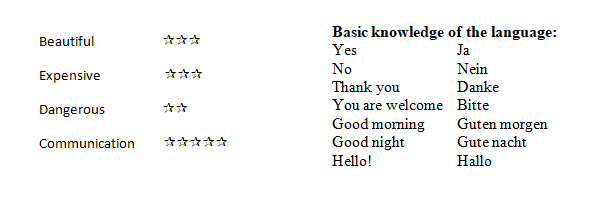
If this article seemed interesting or contributed to your quality information, then you can like my facebook page: o_thessalonikios or follow me on instagram!
Mouzakidis Pantelis








